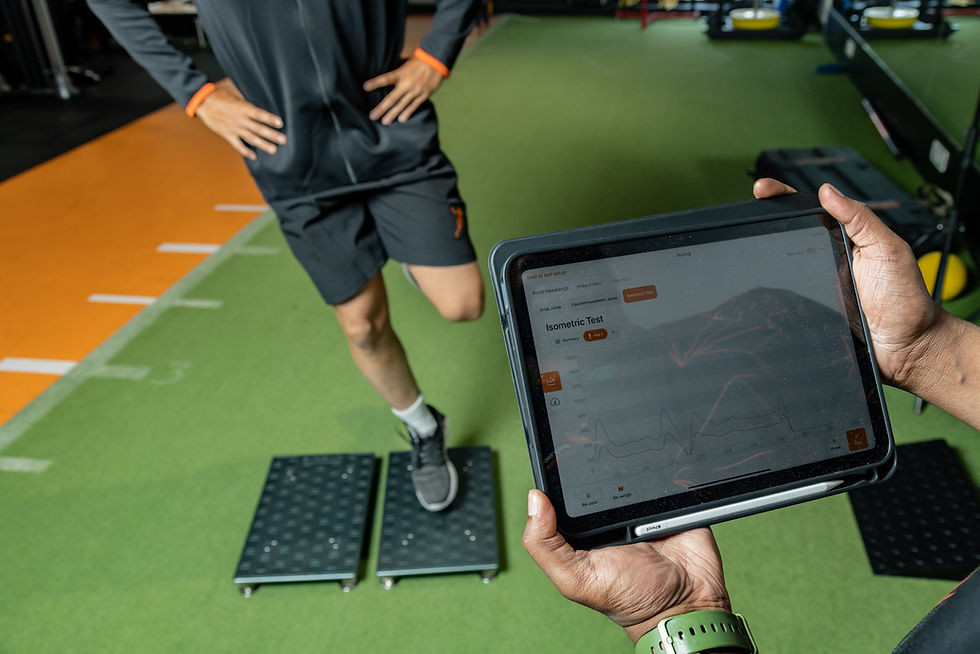OVERCOMING IT BAND PAIN : EFFECTIVE STRATEGIES
- Team PhysioQinesis : Credit Viraj Shah
- Jan 12, 2024
- 2 min read
Updated: Feb 7, 2025
Are you a runner, a cyclist, or someone who loves to stay active? If so, you might be familiar with the frustration of that nagging pain on the outside of your knee. It's a pain that can stop you dead in your tracks, disrupt your training routine, and make every step an agonizing ordeal. Welcome to the world of Iliotibial Band Syndrome, a common and often perplexing injury that plagues many athletes. In this blog, we'll unravel the mystery of IT Band Syndrome, explore its causes, symptoms, and most importantly, reveal the secrets to overcoming this notorious hurdle so you can get back to doing what you love pain-free.
What is this IT Band?
The IT band, or Iliotibial band, is like a strong, flat band running down the side of your leg from your hip to your knee. It's like a special string that helps your leg muscles work together, especially when you're moving your knee and hip.
Iliotibial band syndrome is caused by inflammation of the distal portion of the iliotibial band (ITB), which results in lateral knee pain

Causes of IT Band Syndrome
The primary cause is often attributed to a combination of factors, including overuse, poor running mechanics, muscle imbalances, and inadequate stretching or recovery routines Additionally, issues such as running on uneven surfaces, wearing improper footwear, or suddenly increasing training intensity can contribute to the development of this syndrome.
Signs Suggesting IT Band Syndrome
IT Band Syndrome typically causes pain on the outer side of the knee, just above the joint. It may feel like a sharp, burning sensation. The pain often becomes more noticeable during or after running, especially when going downhill or during extended periods of activity. There may be swelling and tenderness on the outer side of the knee, and you may feel a "knotted" or tight sensation in this area. Some individuals report feeling a snapping or popping sensation at the knee when they flex and extend their leg
How will Sports Physiotherapist help you?
A. Biomechanical Assessment: Assessing your running gait to identify and correct any issues that contribute to IT Band Syndrome.
B. Manual Therapy: Hands-on techniques like massage and myofascial release can help reduce muscle tightness and improve blood flow to the affected area.
C. Taping and Bracing: In some cases, taping or bracing may be recommended to provide support to the IT band and alleviate pressure on the knee.
D. Foam Rolling: Using a foam roller on the IT band and surrounding muscles can help release tension and improve mobility.

Stretching Exercises: To increase the flexibility of the IT band and associated muscles. These stretches can help reduce tension and minimize friction around the knee.

Strengthening Exercises: Strengthening the muscles around the hip and thigh can help support and stabilize the knee joint.
How can you Prevent this Condition?
You can prevent it by maintaining a gradual increase in training intensity, incorporate dynamic stretching in your warm-up routine, strengthen your hip and thigh muscles to provide better support for your IT band, regularly use a foam roller to keep your IT band flexible, pay attention to your running technique and footwear, and be mindful of any early warning signs like discomfort or tightness in the outer knee.




Comments